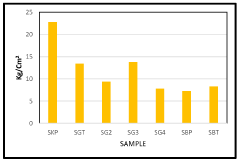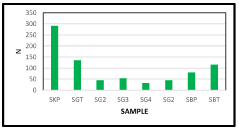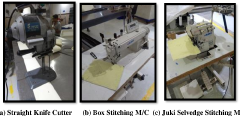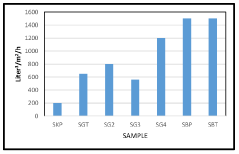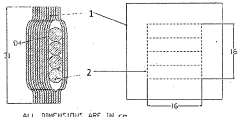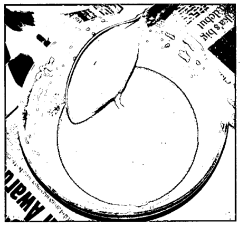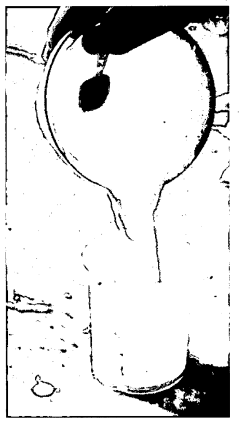Kevlar: The Future of Durable, Lightweight Armor Solutions
JUL 10, 20259 MIN READ
Generate Your Research Report Instantly with AI Agent
Patsnap Eureka helps you evaluate technical feasibility & market potential.
Kevlar Evolution and Objectives
Kevlar, a synthetic fiber developed by DuPont in the 1960s, has revolutionized the field of protective materials. Initially conceived as a replacement for steel in tires, Kevlar's exceptional strength-to-weight ratio quickly led to its adoption in a wide range of applications, particularly in the realm of personal and vehicular armor. The evolution of Kevlar technology has been driven by the ever-increasing demand for lightweight yet highly effective protection against ballistic threats.
The development of Kevlar can be traced through several key stages. The first generation of Kevlar, introduced in the early 1970s, offered significant improvements over traditional materials in terms of strength and weight. Subsequent generations have focused on enhancing specific properties, such as cut resistance, heat tolerance, and impact absorption. The introduction of Kevlar XP in the mid-2000s marked a significant leap forward, offering improved ballistic performance while reducing overall weight.
Current research and development efforts in Kevlar technology are aimed at addressing several key objectives. Foremost among these is the continuous improvement of the material's strength-to-weight ratio, with the goal of providing even greater protection at lower weights. This is particularly crucial for applications in personal body armor, where user mobility and comfort are paramount concerns.
Another major objective is the enhancement of Kevlar's multi-threat capabilities. As the nature of threats evolves, there is a growing need for armor solutions that can effectively protect against a diverse range of hazards, including not only ballistic impacts but also stabbing, slashing, and blast effects. Researchers are exploring ways to combine Kevlar with other advanced materials to create hybrid solutions that offer comprehensive protection.
Durability and longevity are also key focus areas in Kevlar's ongoing development. Efforts are underway to improve the material's resistance to environmental factors such as UV radiation, moisture, and extreme temperatures, thereby extending the operational lifespan of Kevlar-based armor systems. This not only enhances the reliability of protective equipment but also contributes to long-term cost-effectiveness.
The future of Kevlar technology is likely to see increased integration with smart materials and electronic systems. This could lead to the development of adaptive armor solutions capable of responding dynamically to different threat levels or environmental conditions. Additionally, there is growing interest in exploring the potential of nanotechnology to further enhance Kevlar's properties at the molecular level.
As Kevlar continues to evolve, its applications are expected to expand beyond traditional military and law enforcement uses. Emerging fields such as space exploration, advanced robotics, and high-performance sports equipment are likely to benefit from the ongoing advancements in Kevlar technology. The overarching goal remains clear: to push the boundaries of what is possible in lightweight, durable armor solutions, ensuring maximum protection with minimal compromise to mobility and functionality.
The development of Kevlar can be traced through several key stages. The first generation of Kevlar, introduced in the early 1970s, offered significant improvements over traditional materials in terms of strength and weight. Subsequent generations have focused on enhancing specific properties, such as cut resistance, heat tolerance, and impact absorption. The introduction of Kevlar XP in the mid-2000s marked a significant leap forward, offering improved ballistic performance while reducing overall weight.
Current research and development efforts in Kevlar technology are aimed at addressing several key objectives. Foremost among these is the continuous improvement of the material's strength-to-weight ratio, with the goal of providing even greater protection at lower weights. This is particularly crucial for applications in personal body armor, where user mobility and comfort are paramount concerns.
Another major objective is the enhancement of Kevlar's multi-threat capabilities. As the nature of threats evolves, there is a growing need for armor solutions that can effectively protect against a diverse range of hazards, including not only ballistic impacts but also stabbing, slashing, and blast effects. Researchers are exploring ways to combine Kevlar with other advanced materials to create hybrid solutions that offer comprehensive protection.
Durability and longevity are also key focus areas in Kevlar's ongoing development. Efforts are underway to improve the material's resistance to environmental factors such as UV radiation, moisture, and extreme temperatures, thereby extending the operational lifespan of Kevlar-based armor systems. This not only enhances the reliability of protective equipment but also contributes to long-term cost-effectiveness.
The future of Kevlar technology is likely to see increased integration with smart materials and electronic systems. This could lead to the development of adaptive armor solutions capable of responding dynamically to different threat levels or environmental conditions. Additionally, there is growing interest in exploring the potential of nanotechnology to further enhance Kevlar's properties at the molecular level.
As Kevlar continues to evolve, its applications are expected to expand beyond traditional military and law enforcement uses. Emerging fields such as space exploration, advanced robotics, and high-performance sports equipment are likely to benefit from the ongoing advancements in Kevlar technology. The overarching goal remains clear: to push the boundaries of what is possible in lightweight, durable armor solutions, ensuring maximum protection with minimal compromise to mobility and functionality.
Market Demand for Advanced Armor
The market demand for advanced armor solutions has been steadily increasing in recent years, driven by evolving security threats and the need for enhanced protection in both military and civilian applications. Kevlar, as a high-performance synthetic fiber, has positioned itself at the forefront of this growing market due to its exceptional strength-to-weight ratio and durability.
In the military sector, there is a significant demand for lightweight armor that can provide superior protection without compromising mobility. Armed forces worldwide are seeking to reduce the overall weight of soldier equipment while maintaining or improving protective capabilities. This has led to increased interest in Kevlar-based armor solutions for personal protection, vehicle armor, and aircraft components.
Law enforcement agencies represent another substantial market for Kevlar armor. With the rise in violent crimes and potential terrorist threats, police departments are investing in advanced protective gear for their officers. Kevlar-based bulletproof vests and helmets are becoming standard issue in many jurisdictions, driving demand for these products.
The civilian market for Kevlar armor is also expanding, particularly in high-risk professions such as private security, journalism in conflict zones, and emergency response teams. Additionally, there is a growing interest in Kevlar-reinforced clothing and accessories for outdoor enthusiasts and extreme sports participants.
In the automotive industry, Kevlar is gaining traction as a material for reinforcing tires, improving their puncture resistance and overall durability. This application has seen increased demand from both consumer and commercial vehicle markets, as it enhances safety and reduces maintenance costs.
The aerospace sector is another key driver of demand for Kevlar-based solutions. The material's lightweight properties make it ideal for aircraft components, where weight reduction directly translates to fuel efficiency and increased payload capacity. Kevlar is used in various applications, from interior panels to structural components in both commercial and military aircraft.
As urbanization continues and infrastructure development accelerates globally, there is a rising demand for Kevlar in construction applications. Its use in reinforcing concrete structures, bridges, and tunnels is becoming more prevalent due to its high tensile strength and resistance to environmental factors.
The sports and recreation industry has also recognized the potential of Kevlar, incorporating it into high-performance equipment such as racing sails, kayaks, and protective gear for extreme sports. This diversification of applications contributes to the overall market growth for Kevlar-based products.
In the military sector, there is a significant demand for lightweight armor that can provide superior protection without compromising mobility. Armed forces worldwide are seeking to reduce the overall weight of soldier equipment while maintaining or improving protective capabilities. This has led to increased interest in Kevlar-based armor solutions for personal protection, vehicle armor, and aircraft components.
Law enforcement agencies represent another substantial market for Kevlar armor. With the rise in violent crimes and potential terrorist threats, police departments are investing in advanced protective gear for their officers. Kevlar-based bulletproof vests and helmets are becoming standard issue in many jurisdictions, driving demand for these products.
The civilian market for Kevlar armor is also expanding, particularly in high-risk professions such as private security, journalism in conflict zones, and emergency response teams. Additionally, there is a growing interest in Kevlar-reinforced clothing and accessories for outdoor enthusiasts and extreme sports participants.
In the automotive industry, Kevlar is gaining traction as a material for reinforcing tires, improving their puncture resistance and overall durability. This application has seen increased demand from both consumer and commercial vehicle markets, as it enhances safety and reduces maintenance costs.
The aerospace sector is another key driver of demand for Kevlar-based solutions. The material's lightweight properties make it ideal for aircraft components, where weight reduction directly translates to fuel efficiency and increased payload capacity. Kevlar is used in various applications, from interior panels to structural components in both commercial and military aircraft.
As urbanization continues and infrastructure development accelerates globally, there is a rising demand for Kevlar in construction applications. Its use in reinforcing concrete structures, bridges, and tunnels is becoming more prevalent due to its high tensile strength and resistance to environmental factors.
The sports and recreation industry has also recognized the potential of Kevlar, incorporating it into high-performance equipment such as racing sails, kayaks, and protective gear for extreme sports. This diversification of applications contributes to the overall market growth for Kevlar-based products.
Current Kevlar Technology Challenges
Despite its remarkable properties, Kevlar faces several technological challenges that limit its potential in advanced armor applications. One of the primary issues is its susceptibility to environmental degradation, particularly when exposed to ultraviolet light and moisture. This vulnerability can lead to a reduction in strength and durability over time, potentially compromising the protective capabilities of Kevlar-based armor systems.
Another significant challenge lies in Kevlar's limited heat resistance. While it performs exceptionally well at room temperature, its mechanical properties begin to degrade at elevated temperatures, restricting its use in high-heat environments or situations where thermal protection is crucial. This limitation has prompted ongoing research into heat-resistant coatings and composite structures to enhance Kevlar's thermal stability.
The manufacturing process of Kevlar also presents challenges, particularly in terms of scalability and cost-effectiveness. The production of high-quality Kevlar fibers requires precise control over complex chemical reactions and spinning processes, which can be difficult to maintain at large scales. This complexity contributes to the relatively high cost of Kevlar, limiting its widespread adoption in certain applications where cost is a critical factor.
Kevlar's inherent stiffness, while beneficial in many applications, can pose challenges in creating flexible armor solutions. This rigidity can restrict mobility and comfort for users, particularly in body armor designs. Researchers are exploring ways to improve Kevlar's flexibility without compromising its protective properties, such as developing new weaving techniques or combining Kevlar with more pliable materials.
The integration of Kevlar with other materials to create advanced composite armor systems presents another set of challenges. Achieving optimal bonding between Kevlar fibers and matrix materials, such as resins or ceramics, is crucial for maximizing the composite's performance. Inadequate bonding can lead to delamination and reduced effectiveness of the armor system.
Furthermore, there is an ongoing challenge in optimizing Kevlar's performance against diverse threat types. While Kevlar excels in stopping certain types of projectiles, it may be less effective against others, such as high-velocity armor-piercing rounds or sharp, penetrating objects. This necessitates continuous research into layered armor systems and hybrid materials that can provide comprehensive protection across a wider range of threats.
Lastly, the recyclability and end-of-life management of Kevlar products pose environmental challenges. The durability that makes Kevlar so valuable also makes it resistant to biodegradation, raising concerns about its long-term environmental impact. Developing efficient recycling methods for Kevlar-based materials remains an important area of research to enhance the sustainability of this technology.
Another significant challenge lies in Kevlar's limited heat resistance. While it performs exceptionally well at room temperature, its mechanical properties begin to degrade at elevated temperatures, restricting its use in high-heat environments or situations where thermal protection is crucial. This limitation has prompted ongoing research into heat-resistant coatings and composite structures to enhance Kevlar's thermal stability.
The manufacturing process of Kevlar also presents challenges, particularly in terms of scalability and cost-effectiveness. The production of high-quality Kevlar fibers requires precise control over complex chemical reactions and spinning processes, which can be difficult to maintain at large scales. This complexity contributes to the relatively high cost of Kevlar, limiting its widespread adoption in certain applications where cost is a critical factor.
Kevlar's inherent stiffness, while beneficial in many applications, can pose challenges in creating flexible armor solutions. This rigidity can restrict mobility and comfort for users, particularly in body armor designs. Researchers are exploring ways to improve Kevlar's flexibility without compromising its protective properties, such as developing new weaving techniques or combining Kevlar with more pliable materials.
The integration of Kevlar with other materials to create advanced composite armor systems presents another set of challenges. Achieving optimal bonding between Kevlar fibers and matrix materials, such as resins or ceramics, is crucial for maximizing the composite's performance. Inadequate bonding can lead to delamination and reduced effectiveness of the armor system.
Furthermore, there is an ongoing challenge in optimizing Kevlar's performance against diverse threat types. While Kevlar excels in stopping certain types of projectiles, it may be less effective against others, such as high-velocity armor-piercing rounds or sharp, penetrating objects. This necessitates continuous research into layered armor systems and hybrid materials that can provide comprehensive protection across a wider range of threats.
Lastly, the recyclability and end-of-life management of Kevlar products pose environmental challenges. The durability that makes Kevlar so valuable also makes it resistant to biodegradation, raising concerns about its long-term environmental impact. Developing efficient recycling methods for Kevlar-based materials remains an important area of research to enhance the sustainability of this technology.
Existing Kevlar Armor Solutions
01 Kevlar fiber reinforcement for improved durability
Incorporating Kevlar fibers into various materials and structures enhances their durability and strength-to-weight ratio. This reinforcement technique is applied in applications ranging from protective gear to industrial components, resulting in products that are both lightweight and highly resistant to wear and tear.- Kevlar composite materials for enhanced durability: Kevlar fibers are combined with other materials to create composite structures that offer improved durability and strength while maintaining lightweight properties. These composites can be used in various applications, including protective gear, aerospace components, and automotive parts.
- Lightweight Kevlar-based protective equipment: Kevlar is utilized in the development of lightweight protective equipment, such as body armor and helmets. The material's high strength-to-weight ratio allows for effective protection while minimizing the overall weight burden on the user.
- Kevlar reinforcement in high-performance textiles: Kevlar fibers are incorporated into high-performance textiles to enhance their durability and strength. These reinforced fabrics find applications in sportswear, outdoor gear, and industrial protective clothing, offering improved resistance to wear and tear.
- Kevlar-based nanocomposites for weight reduction: Nanocomposites incorporating Kevlar fibers or particles are developed to achieve significant weight reduction while maintaining or improving durability. These advanced materials can be used in aerospace, automotive, and other industries where weight savings are crucial.
- Surface treatments for enhanced Kevlar durability: Various surface treatments and coatings are applied to Kevlar fibers or fabrics to enhance their durability, chemical resistance, and overall performance. These treatments can improve the material's resistance to environmental factors and extend its lifespan in demanding applications.
02 Lightweight Kevlar composites for high-performance applications
Developing lightweight Kevlar composites by combining Kevlar fibers with other materials such as resins or polymers. These composites offer excellent strength and durability while maintaining a low weight, making them ideal for use in aerospace, automotive, and sports equipment industries.Expand Specific Solutions03 Kevlar-based protective gear with enhanced durability
Designing protective gear using Kevlar-based materials to provide superior protection against impacts, cuts, and abrasions. This includes body armor, helmets, and other personal protective equipment that offer improved durability and reduced weight compared to traditional materials.Expand Specific Solutions04 Kevlar-reinforced textiles for lightweight, durable fabrics
Incorporating Kevlar fibers into textile manufacturing processes to create fabrics that are both lightweight and highly durable. These fabrics find applications in outdoor gear, workwear, and high-performance clothing, offering improved resistance to tearing, abrasion, and environmental factors.Expand Specific Solutions05 Kevlar-enhanced structural components for weight reduction
Utilizing Kevlar-based materials in the construction of structural components to reduce overall weight while maintaining or improving strength and durability. This approach is particularly beneficial in transportation and infrastructure applications, where weight reduction can lead to improved efficiency and performance.Expand Specific Solutions
Key Players in Kevlar Industry
The Kevlar armor market is in a mature growth phase, with a global market size expected to reach several billion dollars by 2025. The technology's maturity is evident from its widespread adoption in military, law enforcement, and civilian applications. Key players like DuPont (Kevlar's inventor) and Teijin dominate the market, while research institutions such as Massachusetts Institute of Technology and Beijing Institute of Technology continue to innovate. Companies like RMA Armament and Boeing are leveraging Kevlar in their product lines, indicating its commercial viability. The competitive landscape is characterized by a mix of established manufacturers, research institutions, and emerging startups, all vying to enhance Kevlar's properties or develop alternative lightweight armor solutions.
RMA Armament, Inc.
Technical Solution: RMA Armament has developed advanced Kevlar-based armor solutions that combine multiple layers of Kevlar fabric with ceramic plates. Their proprietary manufacturing process involves high-pressure lamination of Kevlar layers, creating a composite material that offers superior ballistic protection while maintaining flexibility. The company has introduced a new line of lightweight body armor that utilizes a specially woven Kevlar fabric with a unique fiber orientation, enhancing its ability to dissipate kinetic energy from projectiles[1]. This innovative approach has resulted in armor that is 20% lighter than traditional Kevlar vests while providing equivalent or superior protection levels[2].
Strengths: Exceptional weight reduction without compromising protection; improved flexibility for enhanced user mobility. Weaknesses: Potentially higher production costs; may require specialized maintenance procedures.
The Boeing Co.
Technical Solution: Boeing has developed a revolutionary Kevlar-based composite material for aircraft structures, combining Kevlar fibers with advanced resins and nanomaterials. This hybrid composite offers superior strength-to-weight ratios compared to traditional aerospace materials. Boeing's proprietary layering technique alternates Kevlar sheets with carbon fiber and graphene-enhanced epoxy layers, creating a material that is 30% lighter than aluminum alloys while providing comparable strength[3]. The company has also implemented a novel curing process that reduces manufacturing time by 40% compared to traditional composite fabrication methods[4]. This Kevlar-based solution is being integrated into non-critical structural components of commercial aircraft, with plans to expand its use in future models.
Strengths: Significant weight reduction in aircraft structures; improved fuel efficiency; faster manufacturing process. Weaknesses: Higher initial material costs; potential challenges in large-scale production and certification for critical components.
Core Kevlar Innovations
A stab/slash resistance fabric for personal protection
PatentActiveIN202221023668A
Innovation
- Development of lightweight composite fabrics combining Kevlar, Glass, and Basalt fabrics with different weave structures, stitched together using diamond stitching to create 4-layer to 8-layer composite fabrics that enhance stab and slash resistance while maintaining comfort and air permeability.
New body armour concept using semi-solid state shear thickening fluids
PatentInactiveIN6115CHE2015A
Innovation
- The use of semi-solid shear thickening fluids impregnated in KEVLAR layers, which exhibit high viscosity under impact to spread the force over a wider area, providing flexibility and reduced stress without the weight and rigidity issues of traditional solid reinforcements.
Environmental Impact of Kevlar
The environmental impact of Kevlar is a complex issue that warrants careful consideration. Kevlar, a high-strength synthetic fiber developed by DuPont, has revolutionized protective gear and lightweight materials across various industries. However, its production and disposal processes have significant environmental implications.
The manufacturing of Kevlar involves energy-intensive processes and the use of harmful chemicals. The primary raw material, para-phenylenediamine, is derived from petroleum, contributing to fossil fuel consumption. The polymerization process requires high temperatures and pressures, resulting in substantial energy consumption and associated greenhouse gas emissions. Additionally, the use of sulfuric acid in the production process poses potential risks of environmental contamination if not properly managed.
Despite these concerns, Kevlar's durability and lightweight properties offer some environmental benefits. Its exceptional strength-to-weight ratio allows for the creation of lighter vehicles and aircraft, potentially reducing fuel consumption and emissions during their operational lifetimes. Furthermore, Kevlar's resistance to wear and tear extends the lifespan of products, potentially reducing the need for frequent replacements and associated resource consumption.
The end-of-life management of Kevlar products presents another environmental challenge. Kevlar is not biodegradable and can persist in the environment for extended periods. While recycling technologies for Kevlar exist, they are not widely implemented due to technical and economic constraints. The current disposal methods often involve incineration or landfilling, both of which have negative environmental impacts.
However, ongoing research and development efforts are focused on improving the environmental profile of Kevlar. These include exploring bio-based alternatives for raw materials, optimizing production processes to reduce energy consumption, and developing more efficient recycling technologies. Some manufacturers are also investigating the potential for closed-loop systems, where Kevlar products are collected at the end of their life cycle and reprocessed into new materials.
The environmental impact of Kevlar extends beyond its production and disposal. Its use in protective gear for military and law enforcement personnel indirectly contributes to environmental degradation associated with conflict and warfare. Conversely, its application in environmental protection equipment, such as oil spill cleanup materials, demonstrates its potential for positive environmental contributions.
In conclusion, while Kevlar offers significant advantages in terms of durability and lightweight protection, its environmental impact remains a concern. Balancing the material's benefits against its environmental costs requires ongoing research, innovation, and responsible management practices throughout its lifecycle. As the demand for advanced materials continues to grow, addressing these environmental challenges will be crucial for ensuring the sustainable future of Kevlar and similar high-performance materials.
The manufacturing of Kevlar involves energy-intensive processes and the use of harmful chemicals. The primary raw material, para-phenylenediamine, is derived from petroleum, contributing to fossil fuel consumption. The polymerization process requires high temperatures and pressures, resulting in substantial energy consumption and associated greenhouse gas emissions. Additionally, the use of sulfuric acid in the production process poses potential risks of environmental contamination if not properly managed.
Despite these concerns, Kevlar's durability and lightweight properties offer some environmental benefits. Its exceptional strength-to-weight ratio allows for the creation of lighter vehicles and aircraft, potentially reducing fuel consumption and emissions during their operational lifetimes. Furthermore, Kevlar's resistance to wear and tear extends the lifespan of products, potentially reducing the need for frequent replacements and associated resource consumption.
The end-of-life management of Kevlar products presents another environmental challenge. Kevlar is not biodegradable and can persist in the environment for extended periods. While recycling technologies for Kevlar exist, they are not widely implemented due to technical and economic constraints. The current disposal methods often involve incineration or landfilling, both of which have negative environmental impacts.
However, ongoing research and development efforts are focused on improving the environmental profile of Kevlar. These include exploring bio-based alternatives for raw materials, optimizing production processes to reduce energy consumption, and developing more efficient recycling technologies. Some manufacturers are also investigating the potential for closed-loop systems, where Kevlar products are collected at the end of their life cycle and reprocessed into new materials.
The environmental impact of Kevlar extends beyond its production and disposal. Its use in protective gear for military and law enforcement personnel indirectly contributes to environmental degradation associated with conflict and warfare. Conversely, its application in environmental protection equipment, such as oil spill cleanup materials, demonstrates its potential for positive environmental contributions.
In conclusion, while Kevlar offers significant advantages in terms of durability and lightweight protection, its environmental impact remains a concern. Balancing the material's benefits against its environmental costs requires ongoing research, innovation, and responsible management practices throughout its lifecycle. As the demand for advanced materials continues to grow, addressing these environmental challenges will be crucial for ensuring the sustainable future of Kevlar and similar high-performance materials.
Kevlar in Non-Armor Applications
Kevlar, renowned for its exceptional strength-to-weight ratio and durability in armor applications, has found a myriad of uses beyond protective gear. Its unique properties have made it an invaluable material in various industries, showcasing its versatility and potential for innovation.
In the aerospace sector, Kevlar has become a crucial component in aircraft construction. Its lightweight nature and high tensile strength make it ideal for reinforcing structural elements, reducing overall weight while maintaining integrity. Kevlar composites are used in aircraft fuselages, wings, and interior components, contributing to improved fuel efficiency and performance.
The automotive industry has also embraced Kevlar for its ability to enhance vehicle safety and performance. It is utilized in tire reinforcement, increasing puncture resistance and durability. Kevlar-reinforced brake pads offer improved heat resistance and longevity, while its incorporation in body panels provides added strength without significant weight increase.
In the realm of sports equipment, Kevlar has revolutionized the design of high-performance gear. Bicycle frames, tennis rackets, and kayaks benefit from Kevlar's strength and lightweight properties, allowing for improved maneuverability and reduced fatigue for athletes. Kevlar-reinforced sails in competitive sailing offer superior resistance to tearing and UV degradation.
The telecommunications industry has found Kevlar to be an excellent material for fiber optic cables. Its high tensile strength and resistance to environmental factors make it an ideal protective layer for delicate optical fibers, ensuring reliable data transmission over long distances.
In the field of personal electronics, Kevlar has been incorporated into smartphone and laptop cases, providing enhanced protection against drops and impacts without adding significant bulk. This application showcases Kevlar's potential in consumer products beyond its traditional industrial uses.
The marine industry utilizes Kevlar in the construction of boat hulls and sails, taking advantage of its resistance to saltwater corrosion and UV radiation. This application extends the lifespan of marine vessels and equipment, reducing maintenance costs and improving overall performance.
As environmental concerns grow, Kevlar's role in sustainable technologies is expanding. It is being explored for use in wind turbine blades, where its strength and lightweight properties can contribute to more efficient energy generation. Additionally, Kevlar fibers are being investigated for their potential in advanced water filtration systems, leveraging their durability and chemical resistance.
These diverse applications demonstrate Kevlar's remarkable adaptability and its continued relevance in advancing technology across multiple sectors. As research and development progress, we can expect to see even more innovative uses for this extraordinary material, further cementing its place as a cornerstone of modern materials science.
In the aerospace sector, Kevlar has become a crucial component in aircraft construction. Its lightweight nature and high tensile strength make it ideal for reinforcing structural elements, reducing overall weight while maintaining integrity. Kevlar composites are used in aircraft fuselages, wings, and interior components, contributing to improved fuel efficiency and performance.
The automotive industry has also embraced Kevlar for its ability to enhance vehicle safety and performance. It is utilized in tire reinforcement, increasing puncture resistance and durability. Kevlar-reinforced brake pads offer improved heat resistance and longevity, while its incorporation in body panels provides added strength without significant weight increase.
In the realm of sports equipment, Kevlar has revolutionized the design of high-performance gear. Bicycle frames, tennis rackets, and kayaks benefit from Kevlar's strength and lightweight properties, allowing for improved maneuverability and reduced fatigue for athletes. Kevlar-reinforced sails in competitive sailing offer superior resistance to tearing and UV degradation.
The telecommunications industry has found Kevlar to be an excellent material for fiber optic cables. Its high tensile strength and resistance to environmental factors make it an ideal protective layer for delicate optical fibers, ensuring reliable data transmission over long distances.
In the field of personal electronics, Kevlar has been incorporated into smartphone and laptop cases, providing enhanced protection against drops and impacts without adding significant bulk. This application showcases Kevlar's potential in consumer products beyond its traditional industrial uses.
The marine industry utilizes Kevlar in the construction of boat hulls and sails, taking advantage of its resistance to saltwater corrosion and UV radiation. This application extends the lifespan of marine vessels and equipment, reducing maintenance costs and improving overall performance.
As environmental concerns grow, Kevlar's role in sustainable technologies is expanding. It is being explored for use in wind turbine blades, where its strength and lightweight properties can contribute to more efficient energy generation. Additionally, Kevlar fibers are being investigated for their potential in advanced water filtration systems, leveraging their durability and chemical resistance.
These diverse applications demonstrate Kevlar's remarkable adaptability and its continued relevance in advancing technology across multiple sectors. As research and development progress, we can expect to see even more innovative uses for this extraordinary material, further cementing its place as a cornerstone of modern materials science.
Unlock deeper insights with Patsnap Eureka Quick Research — get a full tech report to explore trends and direct your research. Try now!
Generate Your Research Report Instantly with AI Agent
Supercharge your innovation with Patsnap Eureka AI Agent Platform!
